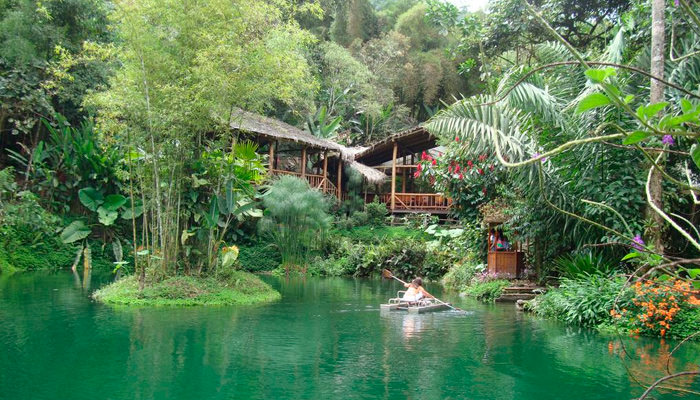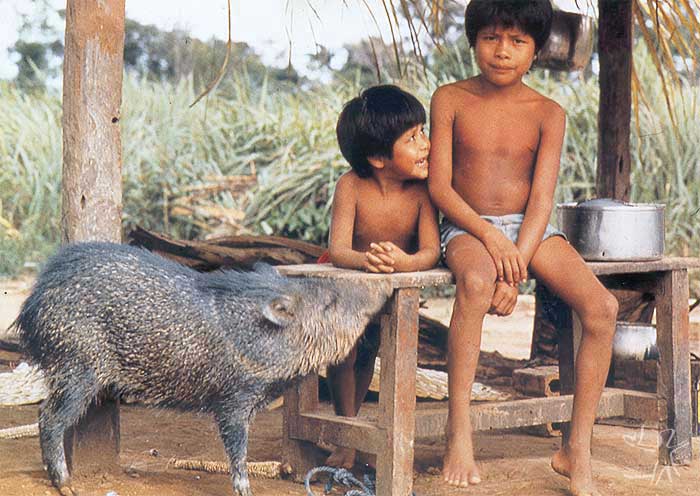
Advertisement with “natural” appeals

Vacation spot marketed as “Ecotourism” in Amazonian Ecuador
Communities are also influenced by their natural surroundings. Whether it is in the form of the materials used or innovative designs to adapt to natural hazards, urban communities while disruptive, are still reflections of the natural landscape. Perspectives on ecotourism and ecology differ among cultures largely because different cultures have different experiences with nature. These differences are most prominent among indigenous and non-indigenous communities as they have very different approaches to controlling, manipulating, and culturally-implementing natural influences.

Image of Amnesty International Researchers investigating petroleum spill in Ecuadorian Amazon

Image taken by ethnographic researcher studying the War’i people
The following abstracts explore research into the natural influences on community design:
Economic Growth and the Environment
What are Urban, Rural, and Suburban Environments?
Endangered Forests, Endangered People: Environmentalist Representations of Indigenous Knowledge
Indigenous Initiatives and Petroleum Politics in the Ecuadorian Amazon
Bottled Water: The pure commodity in the age of branding
“But I Know It’s True”: Environmental Risk Assessment, Justice and Anthropology
Radical Ecology and Conservation Science: An Australian Perspective
Treading Lightly? Ecotourism’s Impact on the Environment
No matter how much the natural landscape is manipulated, it is impossible to cut our connection to the ecology of our environment. Next, learn about how the role of urbanization forces these natural and cultural influences on growing land area.